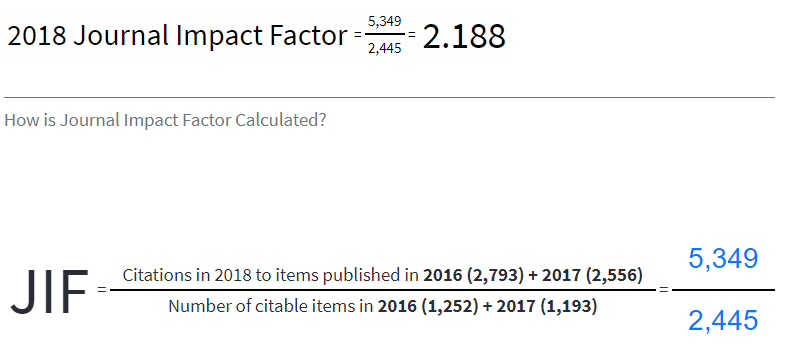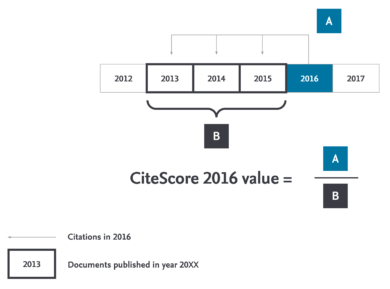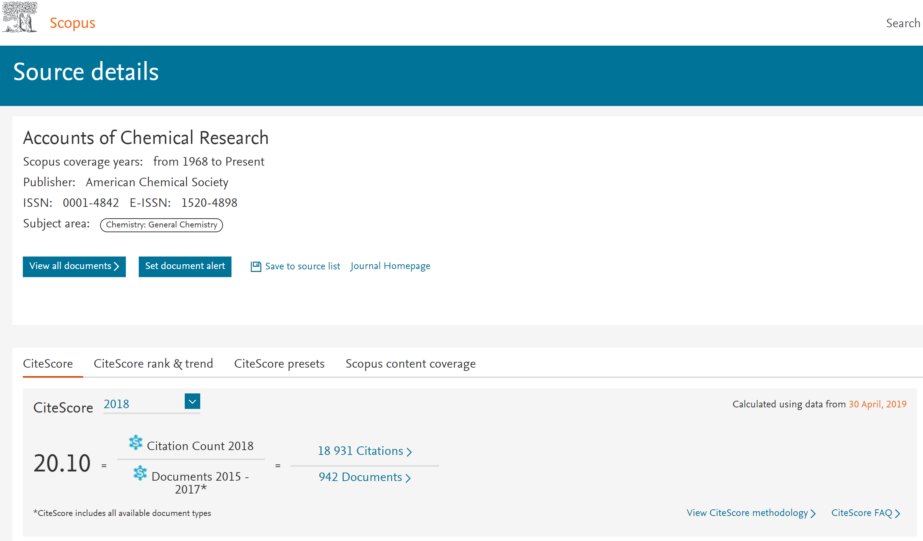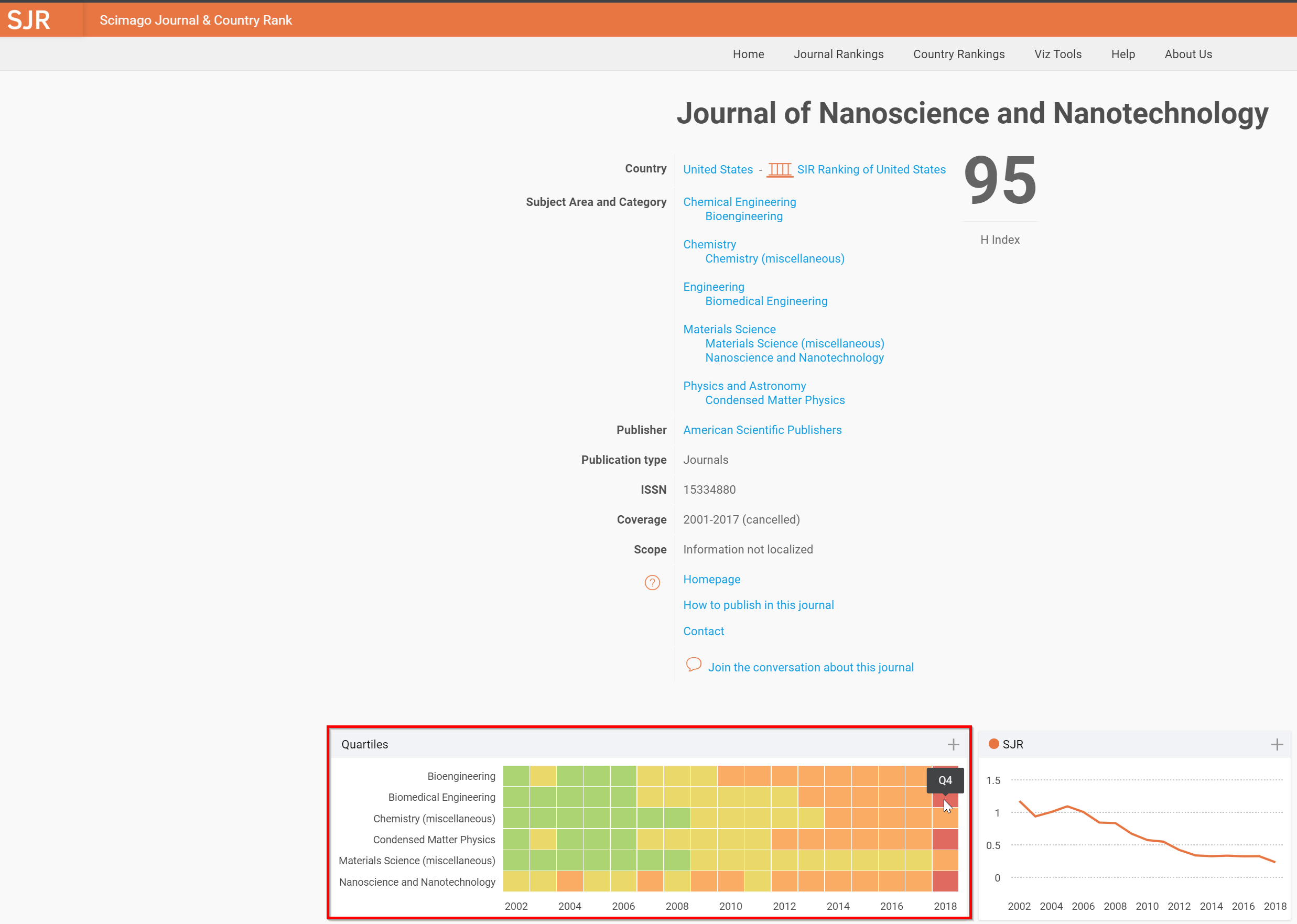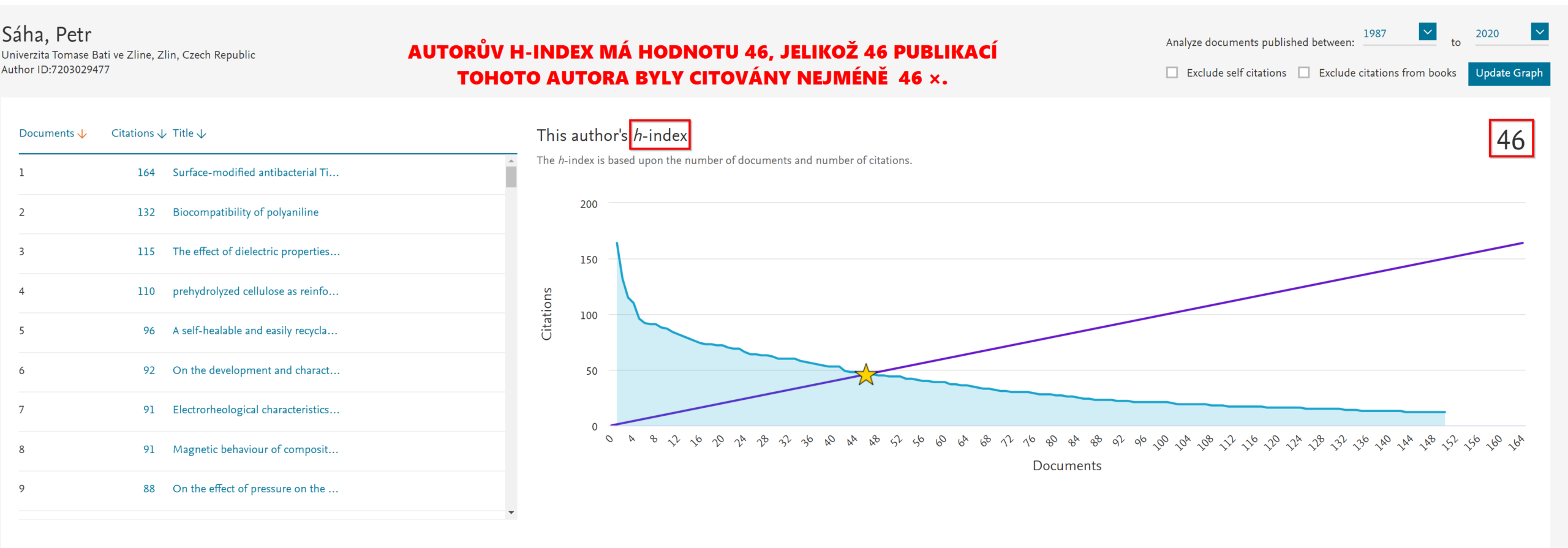Bibliometrics
The quality of published works, individual authors, institutions, but also journals is usually measured on the basis of citation indices (citation indexes). The more citations a text has in other publications, the higher the author’s citation index is. There are a number of indicators and services that work with citation data. Generally, this science is called as bibliometrics. The citation registers Web of Science and Scopus, which are key for evaluating the impact of publishing activities, both in the Czech republic and internationally, have the greatest validity.
Citation indicators used for journals
Citation indicators used in the Web of Science
+ Impact factor (IF) and quartile of a journal from WoS
Impact factor = impact of the journal calculated based on the Web of Science database. Specifies the number of received citations / number of articles from the previous two years.
Calculation of IF = number of citations received in that year / publications in that journal that were published in the two preceding years.
The higher the IF is, the higher is the impact of a particular journal. To find out a value for a longer citation period, you can find a five-year IF, which expresses the average number of citations of articles published in a given journal over the last 5 years.
Example of IF calculation for the Journal of Applied Polymer Science for 2018
The position of the journal within the field using quartiles
The evaluation of journals often depends on their inclusion in the so-called quartiles according to the Impact factor. Each journal is classified into one or more subject categories and the journals in them are then divided according to their rank into individual quartiles (i.e. Q1 to Q4, with the most prestigious ones being in the first quartile).
Where to find the impact factor and quartile of a journal?
- This information can be found directly in the Web of Science database in the list of results (by clicking on the title of the journal next to the article) or in the full article entry (by clicking on the „View Journal Impact“ option)
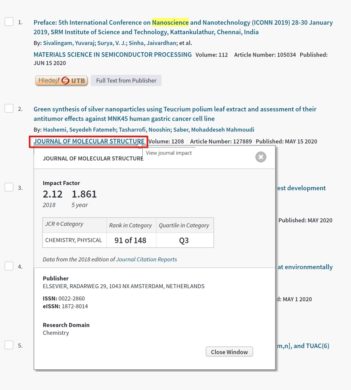

- Another option is theJournal Citation Reports(JCR) database, the quartile of the journal is listed in the details of a specific journal (in the “Rank” tab) or when displaying (comparing) journals according to individual subject categories.
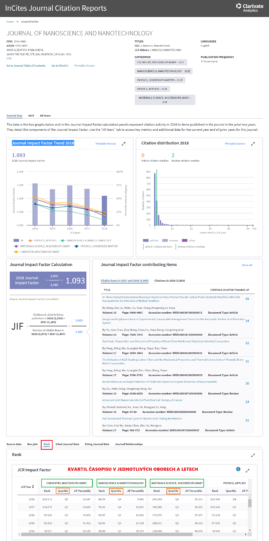
+ Eigenfactor Score (ES)
Eigenfactor Score = the rate of importance of a journal to the scientific community.
Calculation of Eigenfactor Score = the number of citations of articles from the journal in the relation to the total number of articles in the JCR for the past 5 years
Eigenfactor Score estimates the percentage of time that users spend with that journal. Score increases with the size of the journal, directly depends on the number of articles — larger journals also have a higher ES. The sum of the ES for all journals is equal to 100; each journal is attributed a proportional part out of 100.
Where to find the Eigenfactor Score?
The Eigenfactor Score value of the selected journal can be found in the Journal Citations Reports database (in the “Key indicators” section).
+ Article Influence Score (AIS)
Article Influence Score = the rate of the average impact of each article in a journal over the last five years.
The AIS value = the value greater than 1 means that each article in the journal has an above-average influence, a value less than 1 means that each article in the journal has an under-average influence.
AIS expresses the importance of the journal regardless of its size. In addition, this indicator gives more weight to citations from highly cited journals. Since 2017, it has been one of the two basic bibliometric indicators used for evaluation within the new Methodology 2017+. Based on the value of AIS, the journals are divided into groups:
- I. decile (10 % of the „best“ journals in the field),
- I. quartile (25 % of the „best“) — IV. quartile (25 % of the „worst“).
Groups are always created for each field separately. Another indicator is the median indicating the mean value of an AIS journal in a given field.
Where to find the Article Influence Score?
The Article Influence Score of the selected journal can be found in the Journal Citations Reports database (in the “Key indicators” section).
Citation indicators used in the Scopus
+ CiteScore
CiteScore = transparently calculated impact of the journal based on the Scopus database.
Calculation of CiteScore = the number of received citations in the year / the number of articles from the previous 3 years.
Where to find the CiteScore?
The CiteScore value of the selected journal can be found in the Scopus database in the list of results or in the full article record (always by clicking on the journal title in the article).
+ SJR (SCImago Journal Rank) and quartile of a journal from Scopus
SJR (SCImago Journal Rank) = reflects the prestige or status of the citing source.
Calculation of SJR = average number of weighted citations in the current year for publications published in the previous 3 years.
The weight of citations depends on the absolute prestige of the journal in which the article was cited.
Where to find the SCImago Journal Rank?
- The SCImago Journal Rank value of the selected journal for the current year can be found in the Scopus database in the list of results or in the full article record (always by clicking on the journal title in the article).

- Another option is the Scimago Journal & Country Rank portal, the value of SJR can be found in the detail of a specific journal (according to the development in individual years).

Where to find the quartil of a journal from Scopus database?
Finding quartiles of Scopus journals is possible at Scimago Journal & Country Rank. The value of the quartile is given in the detail of a specific journal (for individual fields and years).
+ SNIP (Source Normalized Impact per Paper)
SNIP (Source Normalized Impact per Paper) = contextual citation impact, it corrects for differences in the frequency of citation across research fields.
Calculation of SNIP = the ratio of the absolute number of citations in the current year of publications published in the previous 3 years to the total number of publications in these three years (= RIP – raw impact per paper) considered on the basis of the relative citation potential of a particular field.
The SNIP value takes into account the context (weight of the journal) and the potential for citations (how likely publications are to be cited). The impact of a single citation has a higher value in fields where citations are less likely, and vice versa
Where to find the SNIP?
The SNIP value of the selected journal can be found in the Scopus database in the list of results or in the full article record (always by clicking on the journal title in the article).
+ IPP (Impact Per Publication)
IPP (Impact Per Publication) = three-year influence factor in the Scopus database.
Calculation of IPP = the ratio of citations for the current year and publications published in the previous 3 years / number of articles published in the previous 3 years.
Like the Impact Factor, IPP does not correct differences in citation practice within scientific disciplines. Formerly known as RIP (Raw Impact per Publication)
Useful resources: citation indicators used in the Scopus database.
Citation rates for individual authors
+ The Hirsch index (h-index)
The Hirsch index (h-index) is an index that attempts to measure both the productivity and impact of the published work of an individual scientist or of a group of authors. The index is based on the set of the scientist’s most cited papers and the number of citations that they have received in other publications and is available in the Web of Science and Scopus databases.
The value of h-index = the order number of the relevant publication (N) whose number of citations is the same or higher than its order number.
How to calculate the h-index?
| Article 1 | 15 citations |
| Article 2 | 10 citations |
| Article 3 | 5 citations |
| Article 4 | 4 citations |
| Article 5 | 3 citations |
The h-index has a value of 4 = 4 articles by the relevant author have been cited at least 4×.
Where to find the h-index?
If you want the h-index of authors, you need to use the Web of Science or Scopus citations indexes, specifically the „Author Search“ option.
The h-index in Scopus database
To verify your publishing activity and citations, you need to use the Web of Science or Scopus citations indexes, specifically the „Author Search“ option.
Reporting errors in Web of Science and Scopus databases
If you find an error in your Web of Science records, you can request a change of data using the form or by clicking on “Suggest a correction” directly next to each record. In the second case, the form will be pre-filled with data to identify the article.
If you find an error in the Scopus database, you can use this form to report it.
In case of any ambiguity with the reporting of errors to the Web of Science and Scopus databases, do not hesitate to contact us via e-mail: vedavyzkum@k.utb.cz.
Advanced bibliometric services
In addition to the Web of Science or Scopus databases, there are specialized InCites and SciVal services. These services take data from these databases and can create advanced citation analyzes that are not standardly available within the Web of Science and Scopus. These are commercial products to which TBU in Zlín does not currently have access.
Alternative metrics
While standard bibliometric services work with citation responses, so-called alternative metrics (or altmetrics) take into account a wider range of indicators, while the citation of a given document is only one of the elements of its evaluation. It takes into account, for example, responses on social networks, the number of downloads of a given document to reference managers, the number of views and many other criteria. The advantage of altmetrics is that it measures the impact of publication outputs immediately after their publication (citation responses are usually much slower) and also the fact that they can work at the level of individual documents, not only articles but also other types of documents. The most important services in this area include PlumX, Altmetrics and ImpactStory.
Lists of Journals in FORD according to R&D Council
Lists of journals in FORD according to converters of the Czech Research, Development and Innovation Council can be found here.
If you need help, don’t hesitate to ask our staff:
Science and ResearchE-mail: vedavyzkum@k.utb.cz |
